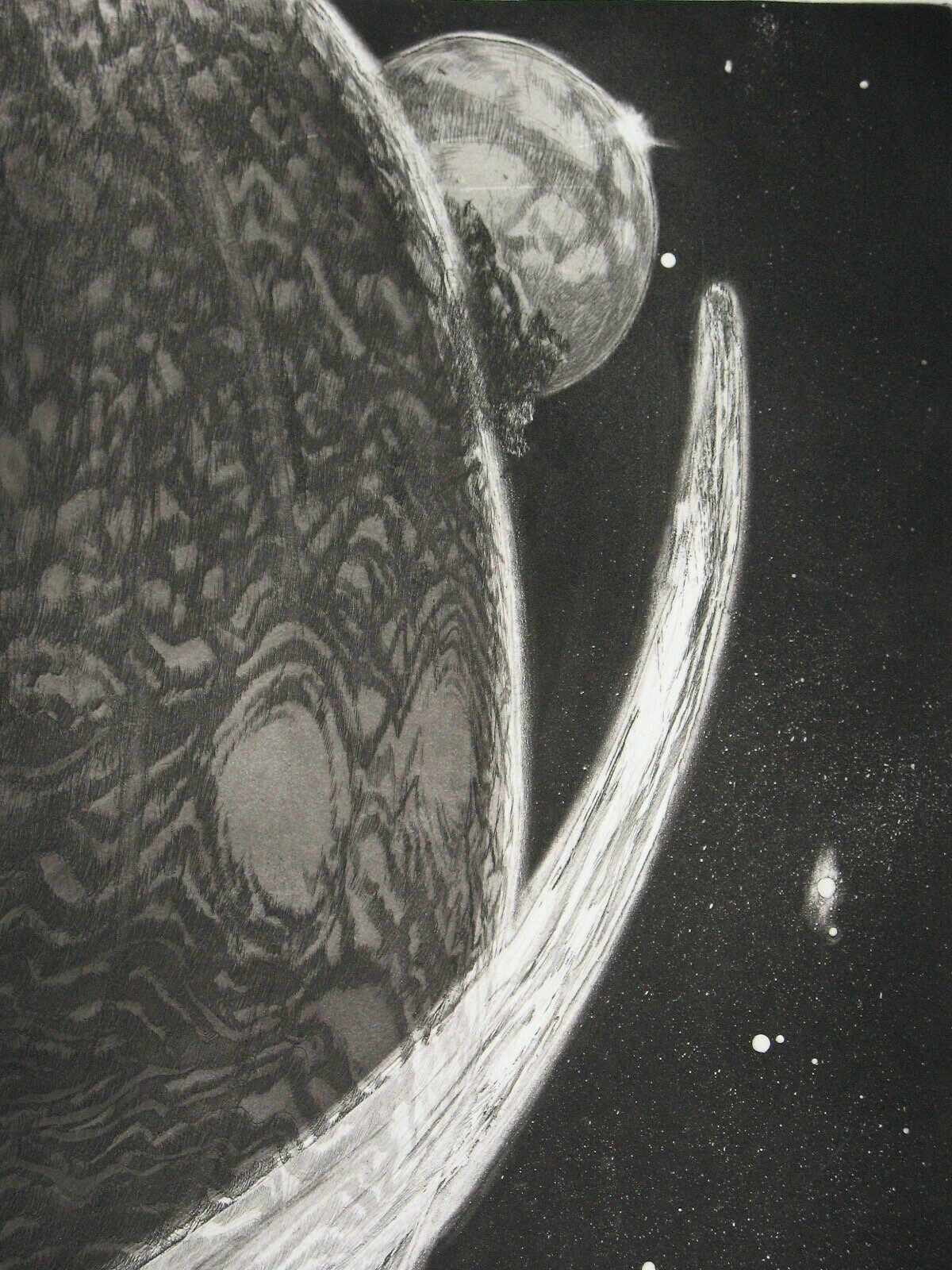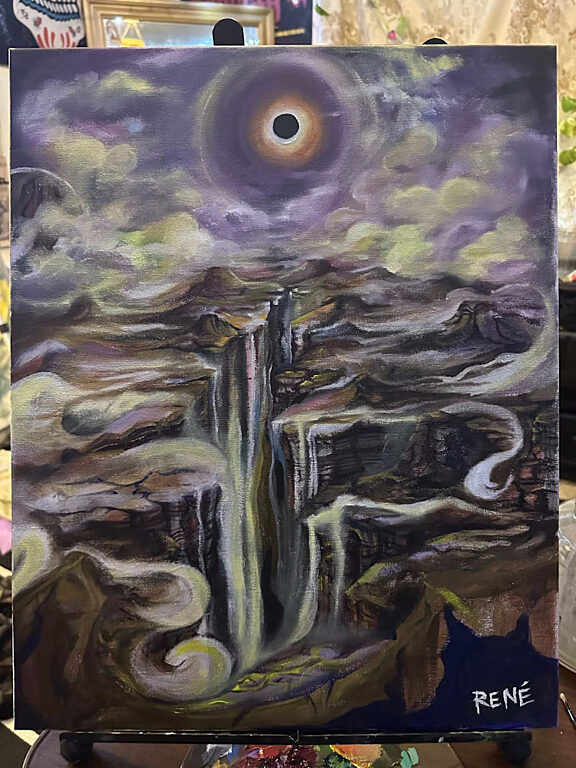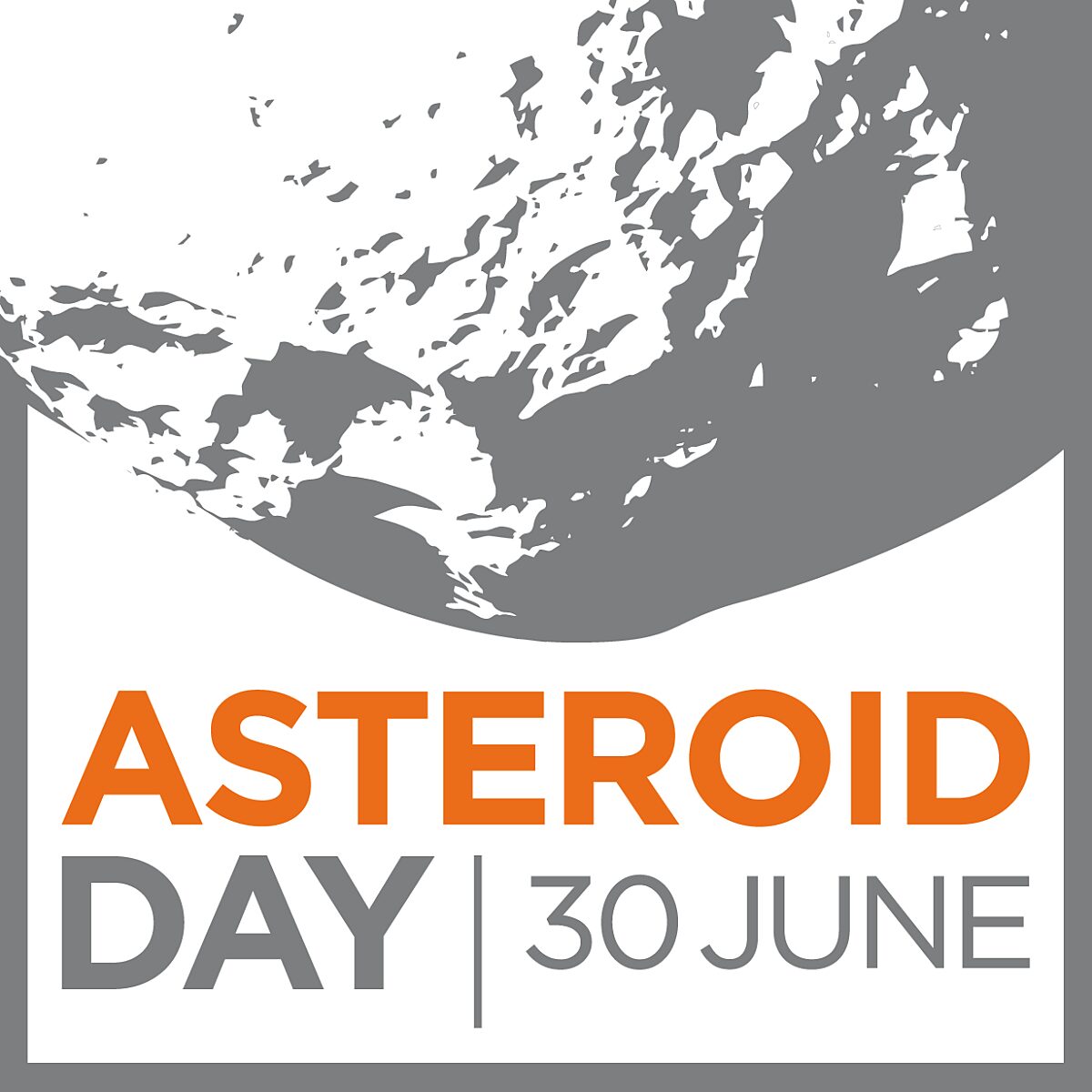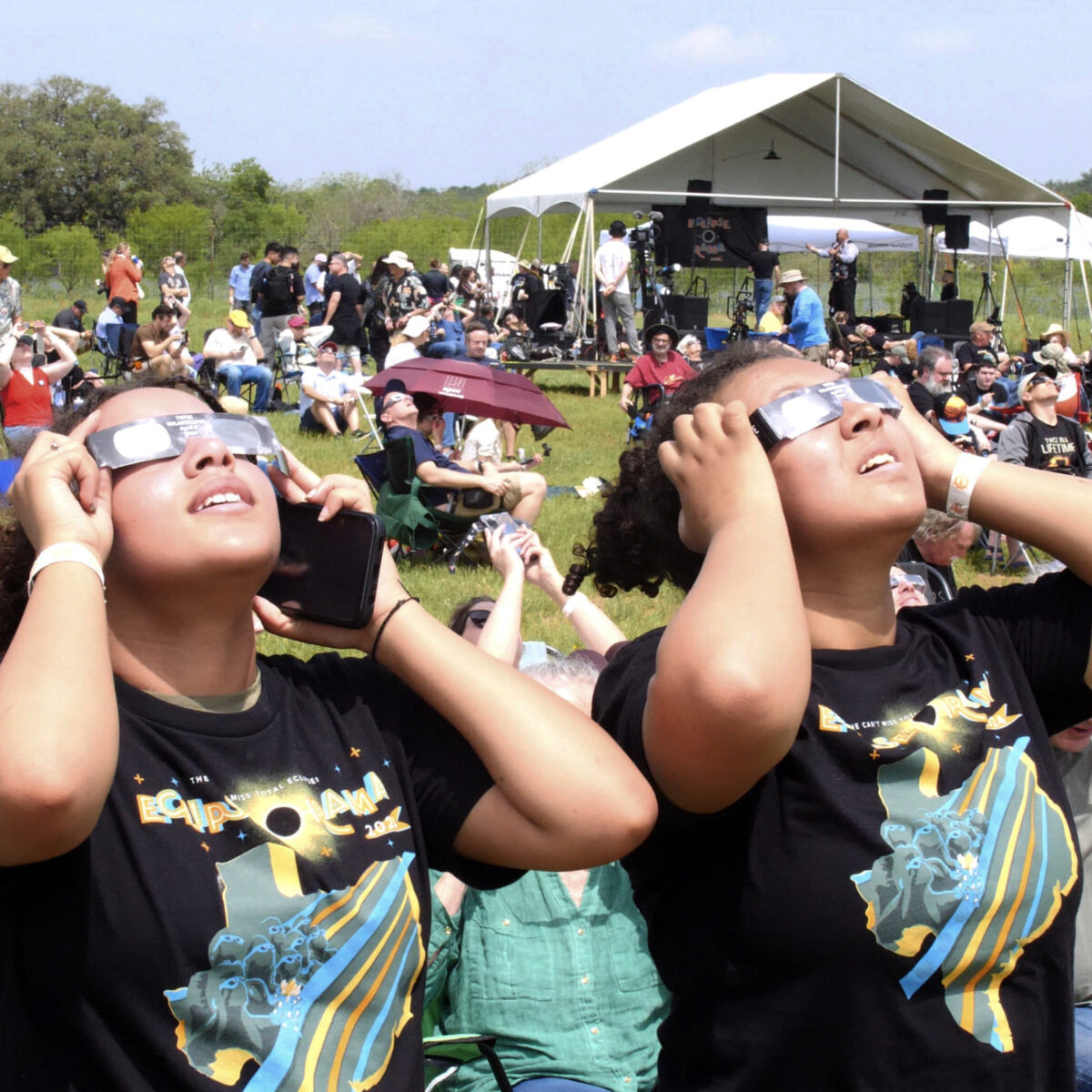
On the Cover: Seven known planets orbit the red dwarf star TRAPPIST-1. Because several of those planets lie in the star’s habitable zone, they are among the most intriguing exoplanets in the search for life beyond our Solar System. While some characteristics of each planet can be determined using remote observations, the only views we have of the planets themselves come from artists, whose imaginations complement the information we have about each world.
Download PDF
Features
June Solstice 2024
Far from alone
How exoplanet discoveries reshape the prospect of alien life.
The search for Earthlike worlds
Our understanding of exoplanets grows as more tools to peer into space come online.
Meet the superlative exoplanets
Experience the most famous of our exoplanet friends!
Your impact: June solstice 2024
Growing space salads and advocating for exploration
Your place in space
An abundance of worlds: Even within a lifetime, so much has changed
By Bill Nye, Planetary Society CEO
Anyone who looks up at the night sky wonders if we’re alone out here in the Cosmos.
Since childhood, I have had an interest in the stars and our Solar System. My father had survived four years as a prisoner of war in China and Japan, having been captured from Wake Island two weeks after being bombed on what is now called Pearl Harbor Day. With all those years without lights at night, he could glance up and claim to name about 50 Northern Hemisphere constellations. When he came home and had children, we had a telescope. I marveled at Saturn and the Moon. And, like anyone who has ever taken a moment to think about anything, I wondered if we are alone in the Universe.
I remember well the first time I scientifically pondered the possibility of life on other worlds. I was in class in the spring of 1977 when Carl Sagan presented a series of probabilities — the Drake equation. I was a senior mechanical engineering student at Cornell University. I was by no means an astronomy major. But as a senior, they let me into the freshman-level Astro 102. People on campus knew well that Professor Sagan was a big deal in his field because he occasionally appeared on ”The Tonight Show” with Johnny Carson — no greater credential could be imagined.
To refresh the memory of those who might not be familiar, the Drake equation is a string of fractions multiplied one after another to reduce the nearly unimaginable number of stars in our galaxy to a much, much smaller number that might be home to intelligent, communicative life. Frank Drake was also a professor at Cornell. He and Sagan naturally collaborated now and then. Back then, planets were presumed to be fairly rare in the Universe. With careful reasoning, Drake conservatively estimated that perhaps one in a hundred stars has a single planet orbiting it.
Some 50 years after it was proposed, the Drake equation is still a very logical way to take a shot at predicting the likelihood that intelligent, technologically advanced aliens are out there in our galaxy. To solve the equation or at least run the numbers, you need to estimate the proportion of life-bearing planets that go on to produce intelligent life that might get in touch with us. You need to estimate the average length of time that advanced civilizations are able to communicate before they crumble. So far, we have only one datum: us and our kin here on Earth. Without any other data, these factors can’t be known. Oh, but how they can fascinate.

The big thing that’s changed since 1977 is our ability to settle on one factor with great confidence, which is the first essential variable in the equation: the fraction of stars that have planets — we call these exoplanets. The number is not, as those folks supposed back then, about one in a hundred. Nowadays, with modern astronomical observations, we presume there may be an average of one to two planets around every star. In other words, the first term of the Drake equation has gotten a hundred times bigger. Planets are far from rare.
Humanity’s desire to find life beyond Earth will always be a strong influence in space science and exploration. And the more we learn, the better equipped we will be to solve Drake’s famous equation and the others like it that have been developed since his time. In just a few decades, our estimated chances of finding intelligent life out there have increased dramatically. And with projects like those that The Planetary Society supports, those chances are bound to keep increasing.
Members on deck
Exoplanet art
We asked members in our online community to share their original creative work depicting exoplanets or exploring ideas related to exoplanets. Here is a selection of our talented members’ work. Learn more about these pieces and see other members’ artwork at community.planetary.org.





Get involved
Defend our planet
June 30 is Asteroid Day, an international day to celebrate the science of asteroids and to promote awareness of the threat they can pose to our planet. Check out asteroidday.org to find public events around the world that combine education and celebration.
You can also support The Planetary Society’s efforts to defend Earth from impacts. Through public education, crowdfunded projects, international competed grants, advocacy, and more, we engage our members to help advance the efforts to find, track, characterize, and deflect potentially dangerous asteroids. You can help by going to planetary.org/defendearth.

Check out your member community
The Planetary Society’s online community now has more than 11,000 members from around the world. These are people who share a passion for space and want to learn and work together to advance science and exploration. One of the most popular activities in the community is our monthly book club. Each virtual book club meeting includes a live video Q&A with the author of that month’s book. Another great offering in the member community is a series of online courses. The newest course is all about the search for life and how you can help advance research, exploration, and even the discovery of life in our Solar System or beyond. Go to community.planetary.org to sign in!
Kids can get involved too!
If there’s a kid in your life who loves space, Planetary Academy is for them! Each Planetary Academy member receives an educational adventure pack in their mailbox every three months. Each pack has been thoughtfully developed by the educational experts of The Planetary Society to delight kids age 5-9 who love space.
Calendar of events
JUNE 20
June solstice
AUGUST 11-12
Perseid meteor shower
AUGUST 14
Conjunction of Mars and Jupiter
SEPTEMBER 8
Saturn at opposition
SEPTEMBER 17-18
Partial lunar eclipse
SEPTEMBER 18
Super harvest Moon
SEPTEMBER 22
September equinox
What's up?
Planets to look for in the night sky
By Bruce Betts, Planetary Society Chief Scientist
In the sky
Yellowish Saturn comes up in the middle of the night in the east in June and near sunset by September. Very bright Jupiter and reddish Mars are in the predawn east. Jupiter approaches Mars from below and passes it in the sky when they are extremely close together on Aug. 14. They are very near the crescent Moon on Aug. 22. A partial lunar eclipse occurs overnight on Sept. 17-18, but less than 4% of the Moon will be in the darker (umbral) part of the eclipse. The Perseid meteor shower, usually one of the top meteor showers of the year, peaks Aug. 11-12, with increased activity several days before and after. Viewing will be best after the setting of the nearly quarter Moon around 1:00 a.m. (depending on your time zone). From a very dark site, there are typically 50 to 75 meteors per hour at the peak. For more night sky tips, you can always check out planetary.org/night-sky.

Random space fact
If Pluto and Charon were each centered on opposite goal lines of an American football field, Pluto would extend to about the 6-yard line and Charon to about the opposite 3-yard line, and they would revolve around the system center of mass at the 11-yard line near Pluto. They revolve around that point that is outside Pluto.
Trivia contest
Our September equinox contest winner is David Lee Summers of Las Cruces, New Mexico, USA. Congratulations! The question was: What did NASA name the Mars helicopter Ingenuity’s first takeoff and landing airfield on Mars? The answer: Wright Brothers Field.
Try to win a copy of the new book “Casting Shadows: Solar and Lunar Eclipses with The Planetary Society” by Bruce Betts and a Planetary Radio T-shirt by answering this question: What was the first exoplanet discovered around a Sunlike star?
Email your answer to [email protected] or mail your answer to The Planetary Report, 60 S. Los Robles Ave., Pasadena, CA 91101. Make sure you include the answer and your name, mailing address, and email address (if you have one). By entering this contest, you are authorizing The Planetary Report to publish your name and hometown. Submissions must be received by Sept. 1, 2024. One entry per person. The winner will be chosen in a random drawing from among all the correct entries received.
Astronomical art
Binary Worlds
Planetary Society member Raven Stihl created this depiction of a pair of exoplanets with their home galaxy shown in the background in swaths of blue and purple. The number and diversity of worlds beyond our Solar System is staggering and provides ample inspiration for artists and scientists alike.
Do you want to see your artwork here? We love to feature our members throughout this magazine. Send your original, space-related artwork to [email protected].
The Planetary Report • June Solstice 2024
Help advance space science and exploration! Become a member of The Planetary Society and you'll receive the full PDF and print versions of The Planetary Report.


 Explore Worlds
Explore Worlds Find Life
Find Life Defend Earth
Defend Earth







